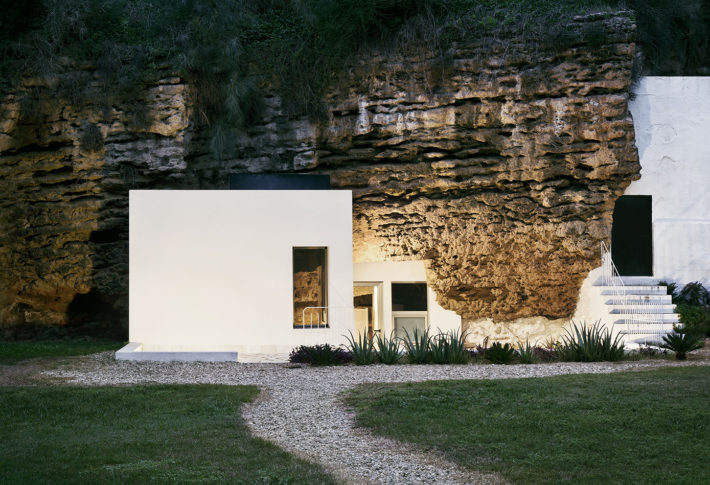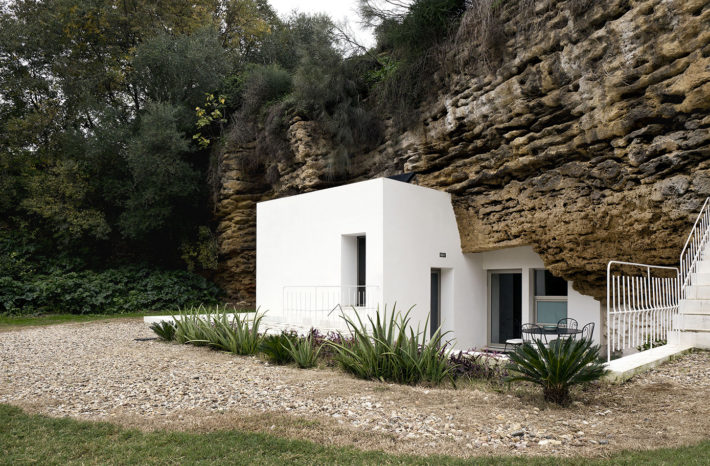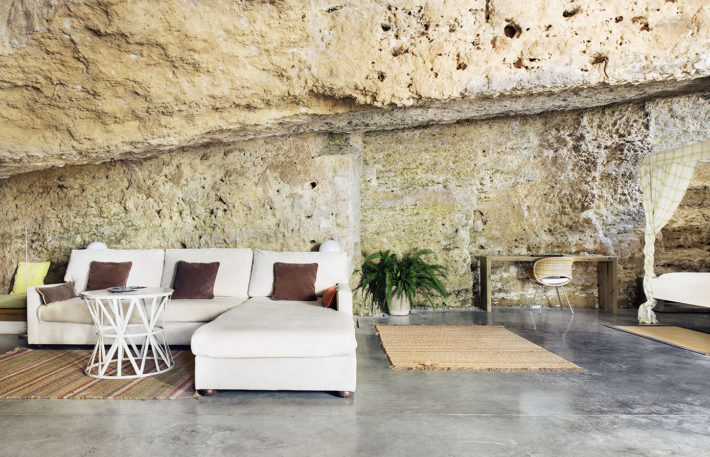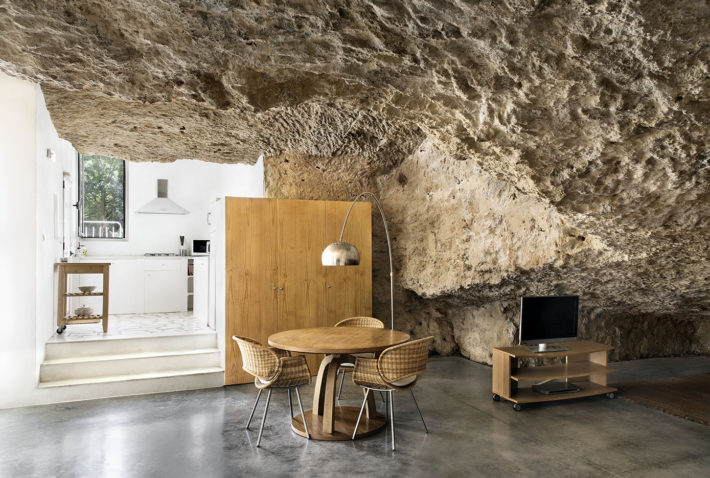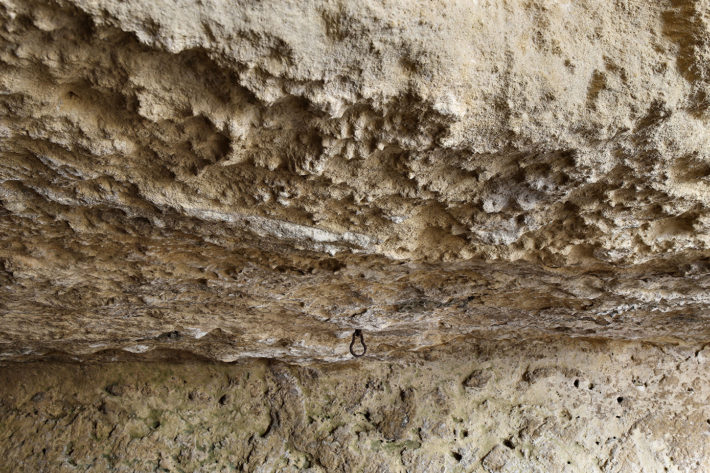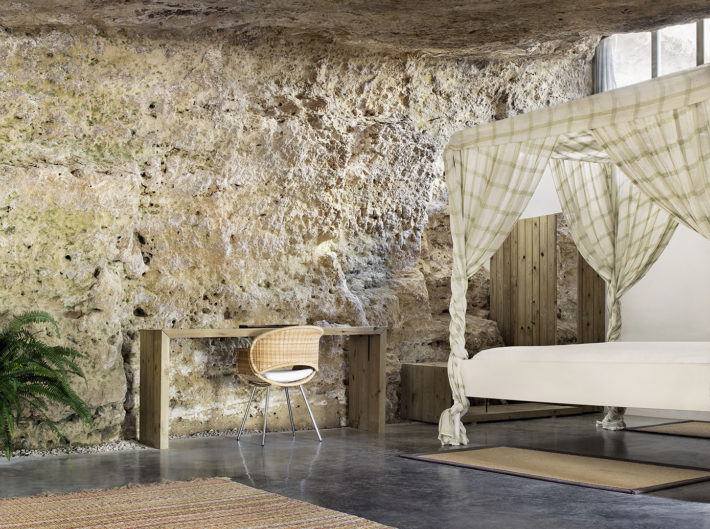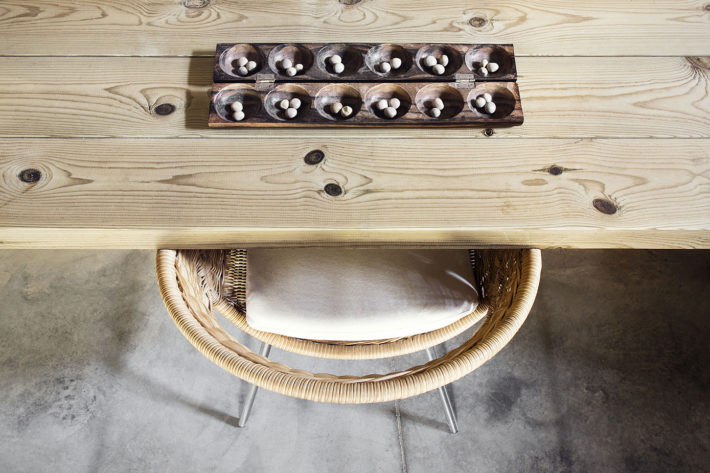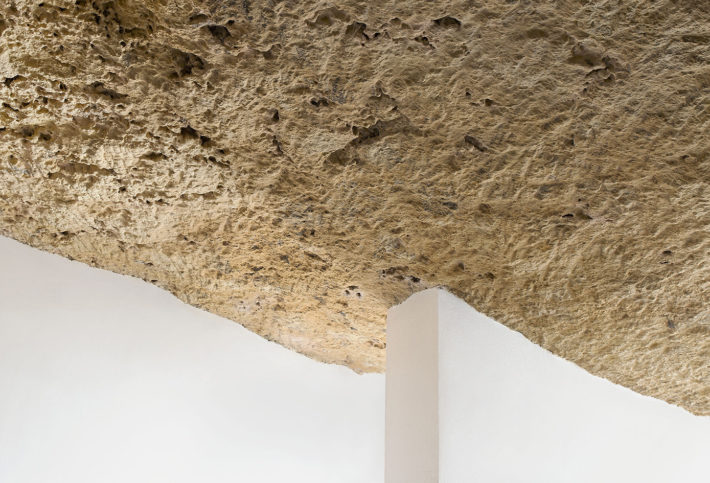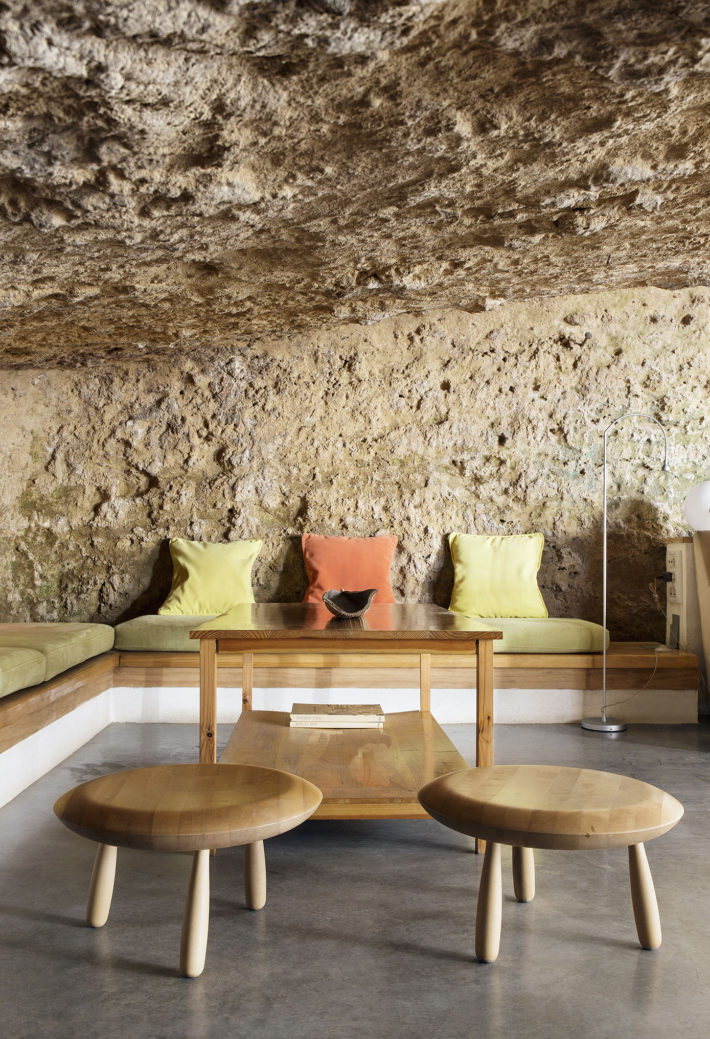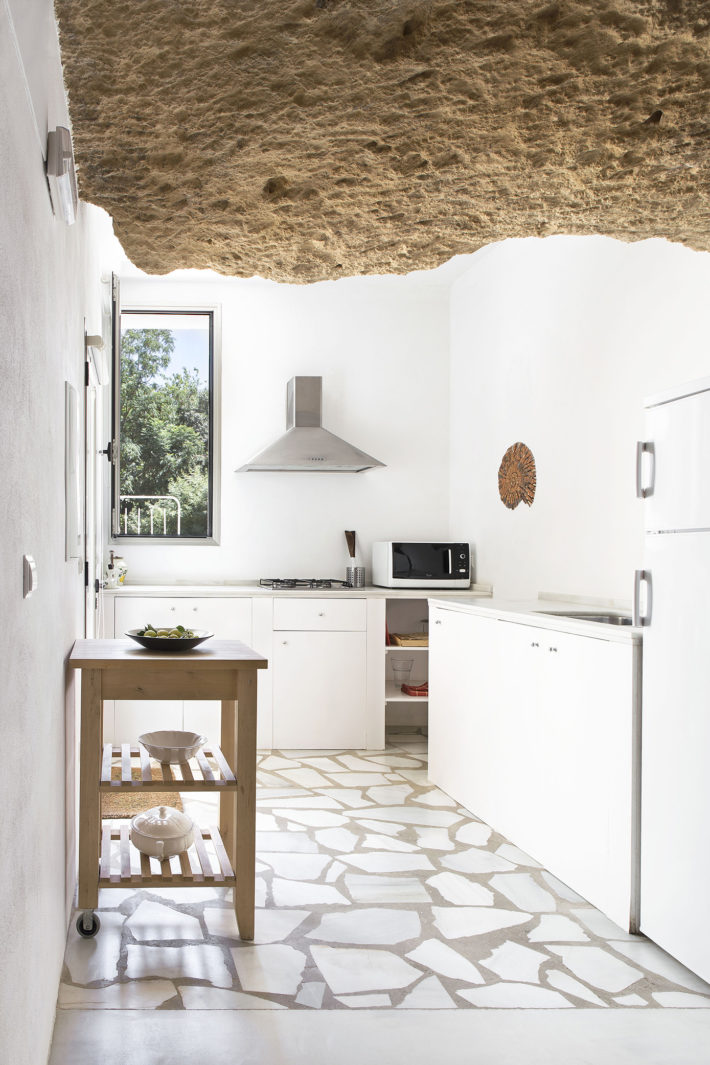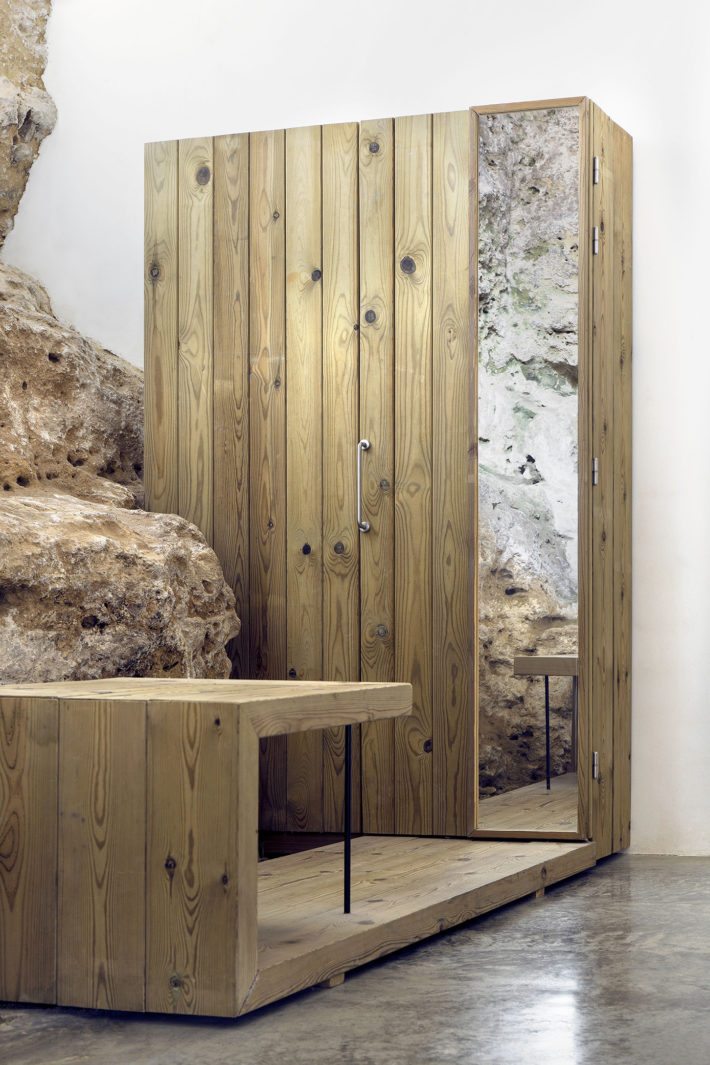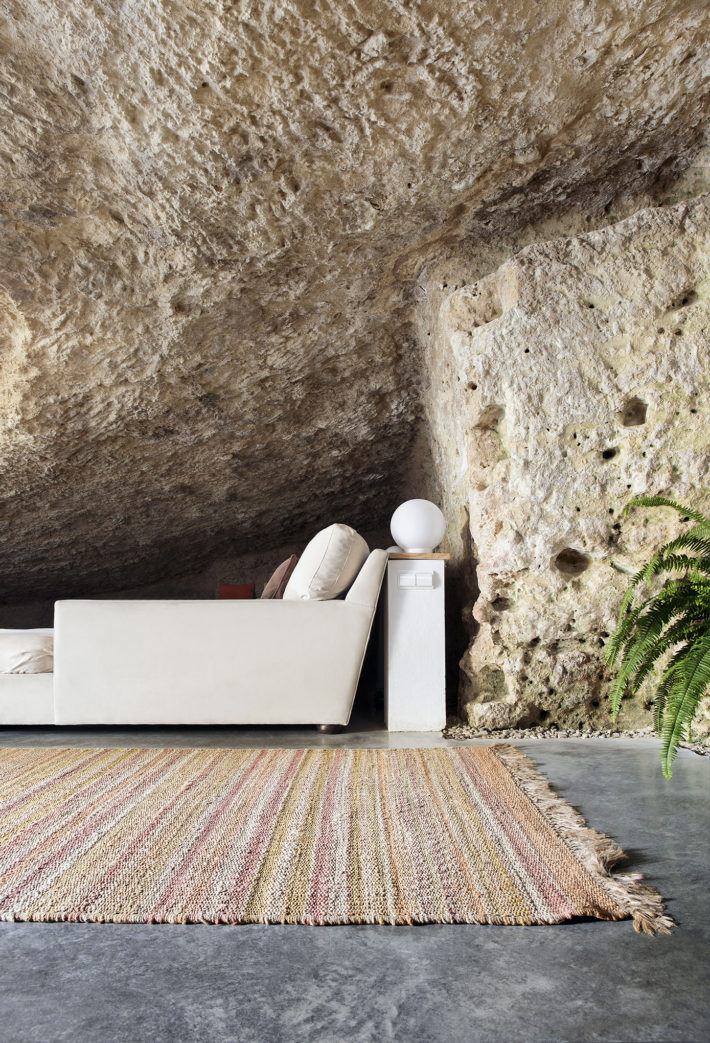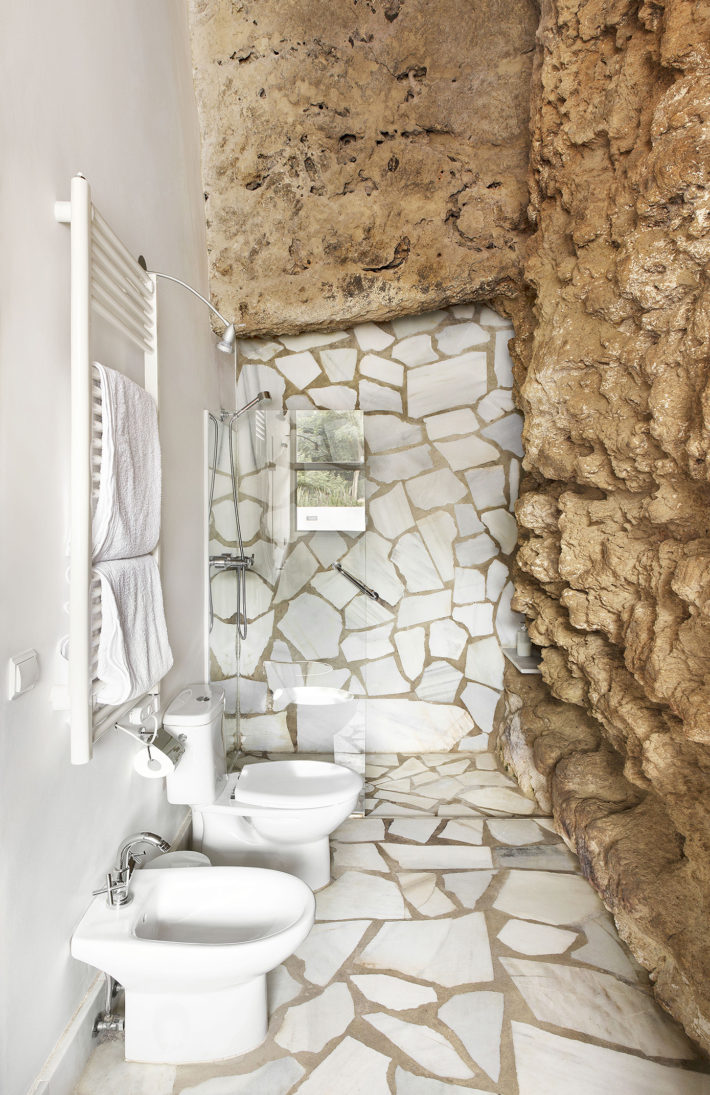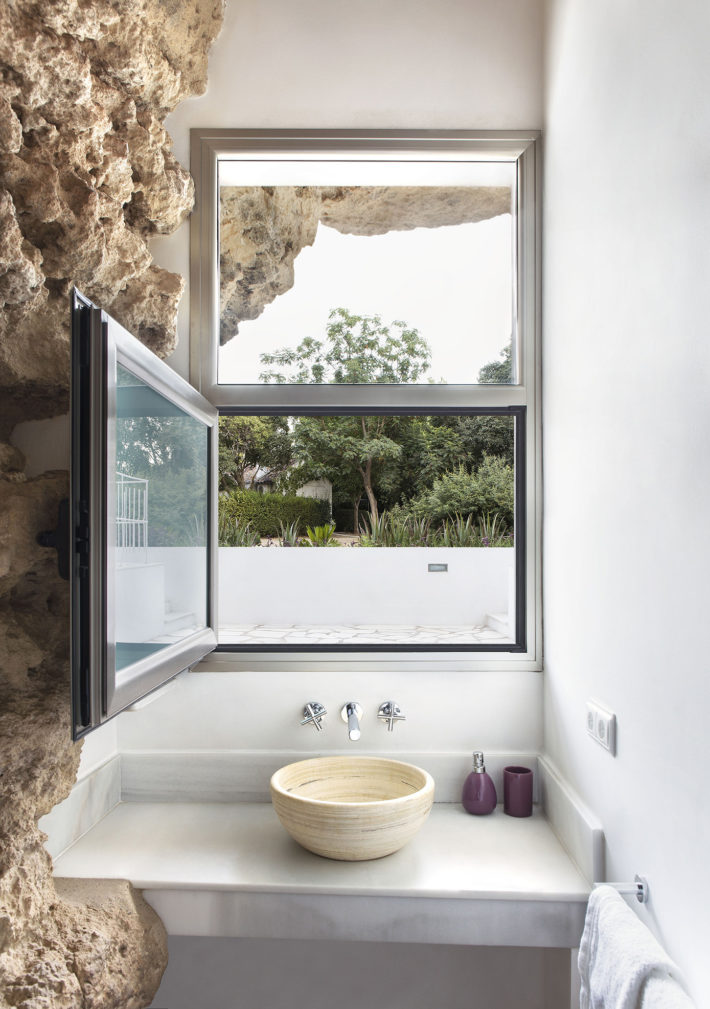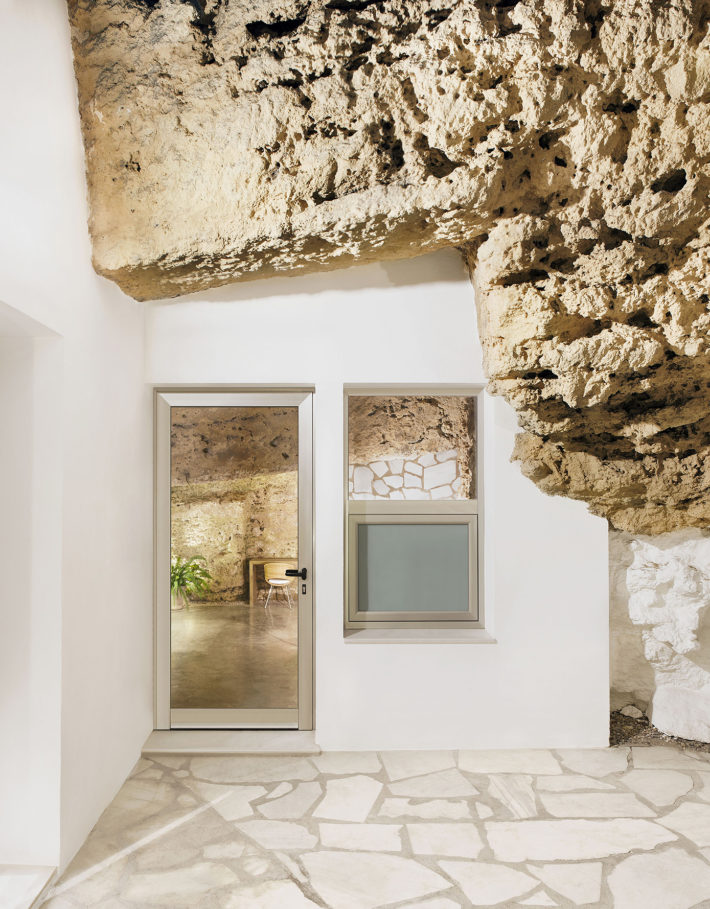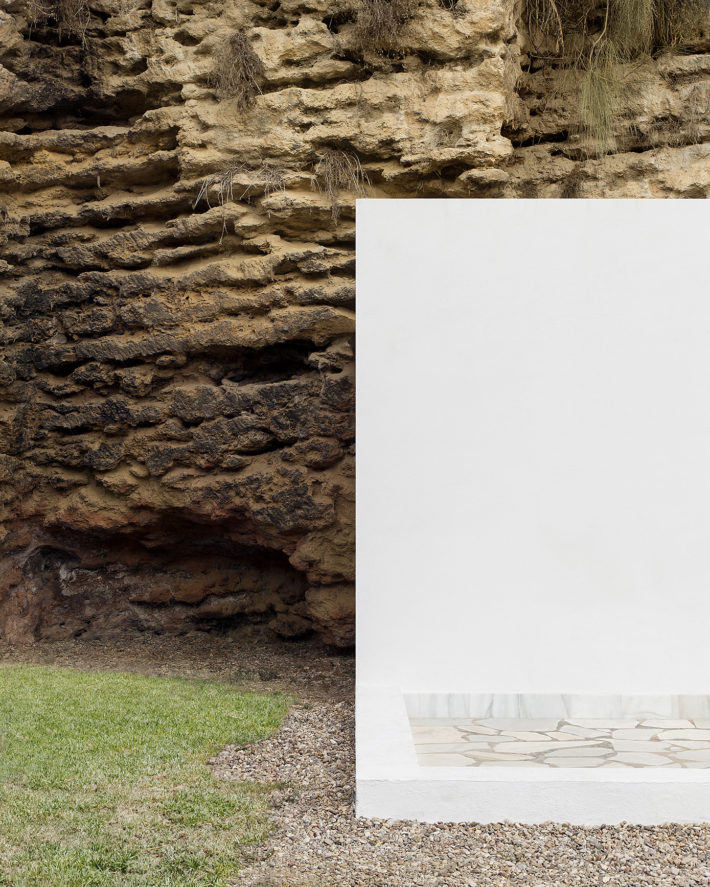30 October 2017
The most widely used construction material in Cordoba during the period of Arab rule, the time when the city’s art and architecture were at the height of their splendor, was the stone typical of the region: calcarenite. When its extraction ceased, the quarries were abandoned and subsequently used as a shelter by people walking along the paths at the foot of the Sierra Morena, on their way to the banks of the Guadalquivir. Today those caves, only apparently inhospitable, are a heritage to be protected and enhanced, and the UMMO practice in Seville, headed by Andrés Moreno and Manuel Murillo, has turned one of them into a house of a contemporary character, blending perfectly into the spontaneous and rugged physicality of the rock. The white walls that define the new volume adapt gently to the profile of the stone, generating a fluid space characterized by the sense of natural wellbeing offered by the site. The contrast between the texture of the calcarenite and the materials introduced by the project, such as concrete, marble and the wood of the furniture, is not at all strident, as it does not weigh on the space; on the contrary, it introduces a degree of lightness and luminosity that are capable of heightening the sense of comfort. The highly unusual setting and the simplicity of the forms utilized are reminiscent of the Mediterranean sensibility and the atmospheres of that “architecture without architects” described by Bernard Rudofsky in his famous essay. The design, in fact, is so successful that it could be mistaken for one of those spontaneous constructions that through the removal of natural material or the addition of pure volumes have always been able to handle the theme of the shelter, without introducing any superfluous or intrusive element. While the image may convey this impression, however, the intervention reflects an approach to design based on a deep understanding of materials and composition, capable of formulating a completely new spatiality without modifying the character of the place.
